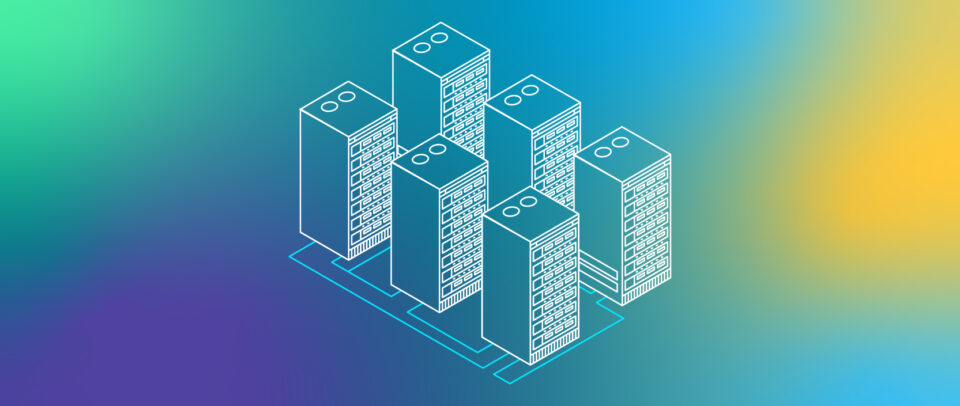Determining Your Ideal Server Size: Which Package is Right for Me
Decades into the era of the web, numerous hosting options deliver their own takes on delivering sites and content to audiences. But selecting the right web hosting package – whether for vital corporate applications or for personal websites – really comes down to one primary factor: scale.
It’s helpful to consider two angles when thinking about scale:
- the power of your server resources
- the ability to change those resources (fittingly referred to as “scalability”)
Selecting a hosting package that suits the scale of your projects – with the right power and scalability – is vital to keeping sites running quickly and consistently.
Server Hardware: Building a Powerful Foundation
Our digital-driven lives depend on servers. And they’re everywhere. From tiny corporate servers that manage printer networks, to network-attached storage used to back up everyday files, servers are all around you. Of course, most servers are designed for only a few people to access at any one time – and they aren’t much more powerful than a desktop computer.
For your website, you’ll need server resources that can handle hundreds (or thousands) of connections at once – and do it without interruption indefinitely.
The Basic Web Server Specifications
There are three core hardware components to any server, and they’ll give you a good indication of the power of your hosting package:
- Processors – The “brains” of your server. Most servers contain multi-core processors so they can attack computing tasks with speed and efficiency. In general, complex sites and applications will run faster with faster processors and more threads.
Redundancy and Support
While the power of your hardware is important for day-to-day access to your server, also consider the hardware and software that is built into your server to ensure data protection and failover. As just one example, many servers duplicate their hard drives utilizing RAID – running multiple hard drives in a redundant array to ensure that a single drive failure won’t cause the entire system to crash. Servers using RAID can be more expensive than without, but that peace of mind over the long run can definitely be worth it. At Media Temple, for instance, our DV platform utilizes RAID-50.
This gets to another underlying concept to keep in mind: The bare specs of your server don’t tell the whole story. The quality of support can make a big difference outside of the raw scale of your service, too. If and when something goes wrong with a server, you want to know your hosting provider will get it resolved as soon as possible. Like RAID, high-quality support can bear a bigger price tag, but not one that’s more costly than prolonged downtime for a business-critical web property. Always consider a web host’s reputation for support.
Scalability, Peak Traffic, and the “Hug of Death”
Every website needs to worry about peak traffic – the number of users that will be attempting to access the website at the moment of its greatest popularity. For corporate websites, this usually occurs after a major newsletter goes out. If you run an ecommerce site, it’s very common during the holiday shopping season. Personal websites can see massive spikes in one-time traffic if they are picked up by popular media outlets as their content goes viral. This has been called the “Slashdot effect” – after the site that became famous for driving traffic spikes – or somewhat adorably “the hug of death.”
Dangers of Being Unprepared
If your server can’t handle a high peak above your typical traffic, it will either slow down to a crawl or it will go offline completely. This is doubly destructive for site owners, since it means the site is down (or inaccessible) when it becomes the most popular. That leads to lost sales, ad revenue, or even other sites (called mirrors) uploading your content and taking advantage of the interest for their own goals.
Selecting a Host to Handle Peak Traffic
Content delivery networks (CDN) can help relieve stress on your servers during the moments your sites are seeing their greatest success. But the real measure of your site’s ability to maintain high levels of peak traffic comes down to your hosting package.
So, let’s go back to the idea of scale: Two things that let your hosting package deal with peaks are your server’s current power and the ability to adjust that power.
When you select a hosting package, one way to plan for peak traffic is to ensure your server has enough power (e.g. processors and RAM) to handle that maximum load. If you run a monthly sale that doubles your site visits, you want the power to handle that promotional period rather than cutting off your resources at your typical day-to-day traffic.
Of course, that only goes as far as what you’re able to predict. A “hug of death,” long-term growth, or a real-world event could shift your traffic beyond what you can foresee now. That’s where scalability comes into play. Many hosting packages allow you to adjust your server resources as needed. As traffic changes, you can change your plan to suit the situation. So look for scalability features when choosing a plan, especially if you envision a project growing.
Alternatively, cloud platforms like AWS provide virtually limitless scalability. By integrating autoscaling technology, cloud hosting environments can even adjust server power to your traffic automatically. The drawback is that this can get complex to configure. While you’ll save money during lulls, it’s also important to note that autoscaling can overrun your budget during a peak. (Helping businesses and agencies get a hold of all this is why we offer Managed Services for AWS.)
Get Help in Making the Right Choice
If you’re not sure how to match the needs of your site to the right server size and type, feel free to reach out anytime. Either open a chat on mediatemple.net or give us a ring at 310.841.5500. We’re always available to help.




